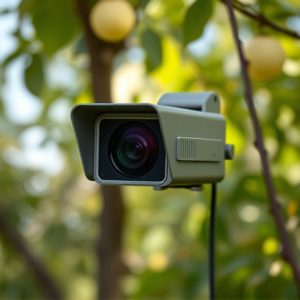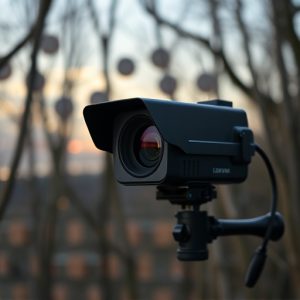Uncovering Hidden Cameras: Advanced Scanning Methods for Elderly Care Safety
Detecting hidden cameras in elderly care facilities requires advanced techniques like thermal imagin…….
Detecting hidden cameras in elderly care facilities requires advanced techniques like thermal imaging and RF signal scanners, combined with visual inspections, to maintain privacy and security. Modern technology, including thermal imaging cameras and AI-powered software, has enhanced detection methods, making it easier to uncover discreet surveillance equipment, especially crucial in eldercare settings where safety and privacy are paramount. These tools help ensure the Best Hidden Cameras for Elderly Care are not used to invade personal spaces, promoting a secure environment.
Hidden recording devices pose a significant concern in elderly care environments, raising critical privacy and security issues. This article delves into advanced scanning methods to detect these clandestine devices, highlighting traditional techniques like electromagnetic signal analysis and modern innovations such as thermal imaging and AI-driven software. We explore best practices for securing care facilities, focusing on high-risk area identification, robust security measures, and staff training. Additionally, we navigate the ethical and legal landscape surrounding hidden cameras in healthcare settings, weighing privacy rights against safety needs. Understanding these methods and considerations is essential when selecting the best hidden cameras for elderly care to foster secure and ethical environments.
- Detecting Hidden Cameras: Advanced Scanning Techniques
- – Traditional methods of detection: electromagnetic signals, audio cues, and visual inspections.
- – Modern technology: thermal imaging, motion sensors, and AI-powered software.
Detecting Hidden Cameras: Advanced Scanning Techniques
Detecting hidden cameras, particularly in sensitive areas like elderly care facilities, requires advanced scanning techniques. One of the most effective methods involves using specialized thermal imaging cameras that can reveal heat signatures distinct from human body temperature, indicating the presence of electronic devices. These tools are invaluable for ensuring privacy and security in such environments.
Additionally, radio frequency (RF) signal scanners are employed to detect hidden cameras that transmit data wirelessly. By scanning for unusual RF signals, professionals can identify devices that may be secretly recording. This technique is especially useful when combined with visual inspections, as it allows for a comprehensive and discreet assessment of potential security breaches, ensuring the best hidden cameras for elderly care are not only present but also effectively undetectable by unauthorized individuals.
– Traditional methods of detection: electromagnetic signals, audio cues, and visual inspections.
Hidden recording devices, often referred to as covert cameras, pose a unique challenge in their detection. Traditional methods have relied on electromagnetic signals, which can be detected using specialized gear, and audio cues, where subtle sounds from the device’s operation may give them away. Visual inspections are another common tactic, where trained professionals look for signs of tampering or unusual equipment. However, these methods aren’t foolproof, especially when dealing with advanced and discreet devices designed to avoid detection, such as those considered among the Best Hidden Cameras for Elderly Care.
The evolution in technology has led to more sophisticated scanning techniques, but even these have their limitations. Some modern approaches include thermal imaging, which can identify heat signatures, and radar technology, capable of penetrating certain materials to detect movement or unusual objects. While effective against some types of hidden cameras, these methods are not universal solutions, especially when dealing with miniaturized devices designed to blend seamlessly into their surroundings.
– Modern technology: thermal imaging, motion sensors, and AI-powered software.
Modern technology has revolutionized hidden recording device signal scanning methods, making it easier to detect even the most discreet surveillance equipment. Thermal imaging cameras, for instance, can identify heat signatures, revealing hidden devices that might be camouflaged or hidden from direct sight. These advanced tools are particularly useful in elderly care facilities where privacy and safety are paramount. By utilizing thermal imaging, caregivers and staff can ensure that best hidden cameras for elderly care are not being used to invade personal spaces.
Motion sensors and AI-powered software further enhance the capability to uncover hidden signals. Motion sensors can detect any unusual movement, triggering alerts that prompt a closer inspection. AI algorithms, trained to recognize patterns and anomalies, can analyze vast amounts of data quickly, identifying potential hidden camera signals that might be missed by human observers. This technology ensures that facilities are protected against unauthorized surveillance, promoting a safe and secure environment for residents.
In the pursuit of ensuring safety and privacy, especially in sensitive environments like elderly care facilities, leveraging advanced hidden camera detection methods is paramount. While traditional techniques remain useful, modern technologies such as thermal imaging, motion sensors, and AI-driven software offer significantly enhanced accuracy and efficiency. When selecting surveillance equipment, considering the best hidden cameras for elderly care that incorporate these innovative scanning methods can greatly contribute to a secure and peaceful atmosphere for all residents.


